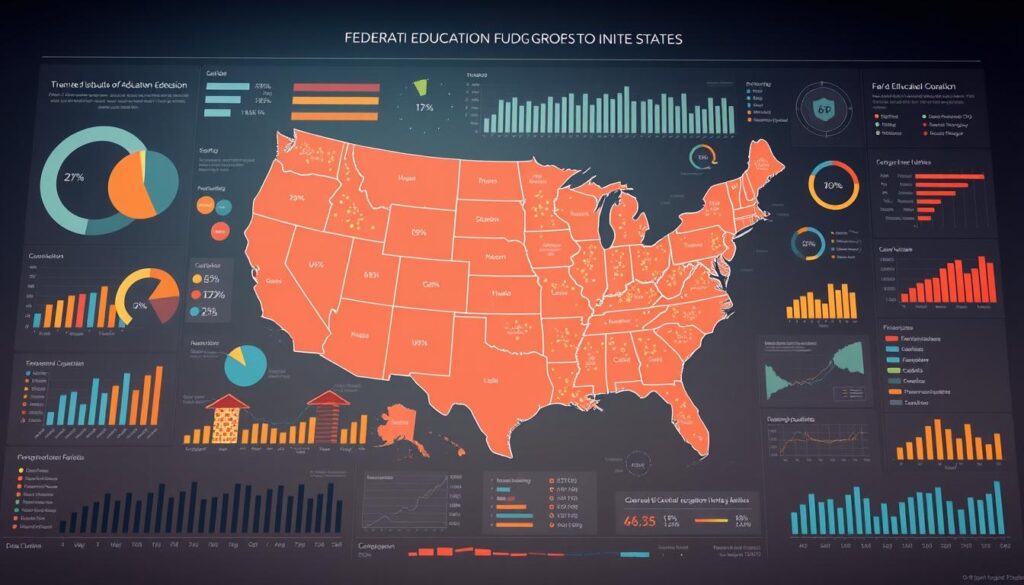The US Department of Education emerges as a cornerstone in reshaping the educational fabric of America. Its establishment aimed at enhancing educational outcomes across the nation, it now plays a crucial role in crafting policies that significantly influence the educational trajectories of millions of students within the United States.
Central to its mission, the department spearheads initiatives aimed at ensuring equitable access to superior educational experiences. Through the establishment of national standards and the promotion of cutting-edge educational methodologies, the US Department of Education endeavors to equip students from varied backgrounds with the necessary tools to navigate future complexities.
Adaptation is essential for educational advancement. The department engages in collaborative efforts with state and local educational entities to deploy evidence-based strategies. These strategies are designed to meet evolving educational demands and to leverage technological innovations within the educational domain.
Key Takeaways
- Federal agency dedicated to improving educational standards
- Promotes equal learning opportunities nationwide
- Develops comprehensive educational policies
- Supports innovation in teaching and learning
- Drives technological integration in education
History and Evolution of the Department of Education USA
The trajectory of the department of education USA encapsulates a multifaceted narrative of educational governance and policy metamorphosis. As a dedicated federal entity, it has been instrumental in molding national educational standards and initiatives.
Establishment and Early Years
The genesis of the department dates back to the late 19th century, with the inception of efforts to consolidate educational research and information dissemination. In 1980, President Jimmy Carter signed the Department of Education Organization Act, formally elevating education to a cabinet-level department.
- Established as a cabinet-level agency in 1980
- Initially focused on collecting educational data
- Aimed to improve educational outcomes nationwide
Key Legislative Milestones
Several landmark legislative actions have reshaped the department’s scope and influence. The No Child Left Behind Act of 2001 was a pivotal moment, introducing standardized testing and accountability measures.
- Elementary and Secondary Education Act (1965)
- No Child Left Behind Act (2001)
- Every Student Succeeds Act (2015)
Transformation Through Different Administrations
Leaders such as Linda McMahon have significantly contributed to educational policy discussions, underscoring the department’s dynamic nature. Each administration has brought its unique perspectives and priorities to educational governance.
The department of education USA continues to evolve, addressing emerging challenges in learning, technology, and student achievement. Its ongoing metamorphosis mirrors the intricate landscape of American education.
The Role of the US Department of Education in Shaping the Future
The US Department of Education is pivotal in reshaping American education for the 21st century. Through the formulation of strategic policies and the introduction of innovative programs, the department endeavors to elevate educational opportunities nationwide.
Strategic methodologies encompass:
- Implementation of comprehensive educational standards
- Support for technological integration within classrooms
- Promotion of equity and access to superior educational opportunities
- Advancement of data-driven strategies for educational improvement
Recent initiatives, as highlighted by Skynews, aim to tackle pivotal challenges in contemporary education. The emphasis on digital learning platforms and personalized educational resources is a cornerstone of their strategic planning.
The department collaborates with state and local educational entities to foster responsive learning environments. Their methodology prioritizes:
- Modernization of curricula
- Professional development for educators
- Adoption of student-centered learning methodologies
- Preparation in technological skills
Through ongoing adaptation to evolving educational paradigms, the department guarantees that students are equipped with dynamic, future-oriented educational experiences. These experiences are designed to prepare students for the complexities of a globalized world.
Federal Education Funding and Resource Distribution

The pivotal role of the US Department of Education in fostering educational opportunities nationwide is underscored by its strategic allocation of funding and resources. This financial support is a cornerstone for enhancing educational accessibility and quality on a national scale.
Grant Programs and Financial Aid
At the heart of the department’s strategy lies the implementation of federal grant programs, designed to bolster both students and educational institutions. These initiatives are meticulously crafted to address a myriad of educational requirements, encompassing:
- Pell Grants for low-income undergraduate students
- Title I funding for schools with high percentages of disadvantaged students
- Special education support programs
- STEM education development grants
Budget Allocation Strategies
The US Department of Education employs advanced methodologies to ensure the effective distribution of financial resources. Determining funding priorities involves a thorough examination of educational needs and performance metrics.
| Funding Category | Percentage of Budget | Primary Focus |
|---|---|---|
| K-12 Education | 42% | Core educational programs |
| Higher Education Support | 35% | Student financial aid |
| Special Education | 15% | Inclusive learning support |
| Educational Technology | 8% | Digital learning initiatives |
State and Local Education Support
The department’s collaboration with state and local educational agencies is instrumental in ensuring the targeted distribution of resources. Competitive grant programs facilitate localized educational enhancements, addressing specific community needs while upholding national educational benchmarks.
Through the deployment of strategic funding mechanisms, the US Department of Education remains committed to driving educational innovation and accessibility across a spectrum of learning environments.
Educational Policy Implementation and Oversight

The department of education USA is pivotal in crafting national educational standards, ensuring uniform policy execution across varied educational settings. This intricate endeavor necessitates a multitude of strategic methodologies to uphold educational quality and equity.
Essential policy implementation strategies encompass:
- Developing comprehensive regulatory frameworks
- Monitoring school performance metrics
- Establishing national educational guidelines
- Conducting rigorous compliance assessments
Linda McMahon’s visionary leadership has profoundly impacted educational policy formulation. Her acumen in organizational management has expedited policy development, fostering more efficacious governance within educational entities.
| Policy Area | Implementation Focus | Key Objectives |
|---|---|---|
| Curriculum Standards | National Learning Benchmarks | Ensure consistent educational quality |
| Equity Initiatives | Resource Distribution | Reduce educational disparities |
| Accountability Measures | Performance Evaluation | Improve institutional effectiveness |
The department’s oversight mechanisms aim to establish transparent, accountable educational systems that bolster student achievement and institutional advancement. Through collaborative endeavors and data-driven methodologies, they persist in refining and enhancing national educational policies.
Innovation and Technology Integration in Education
The US Department of Education spearheads technological advancements in educational settings. Digital innovation emerges as a pivotal strategy for equipping students with the skills necessary for the rapidly changing global environment. Educational institutions, by adopting advanced technologies, can foster more dynamic and productive learning experiences.
Digital Learning Initiatives
Skynews recently underscored the department’s dedication to enhancing digital learning opportunities. The focus lies on several key areas:
- Implementing comprehensive online learning platforms
- Supporting remote education technologies
- Developing interactive digital curriculum resources
- Providing professional development for educators in technology integration
Educational Technology Standards
The US Department of Education has set forth stringent technology standards to ensure students acquire vital digital competencies. These standards include:
- Computational thinking skills
- Digital citizenship
- Cybersecurity awareness
- Advanced technological literacy
Future-Ready Learning Programs
Emerging learning programs aim to merge traditional education with technological innovation. Future-ready initiatives strive to create adaptive learning environments that equip students with the technological prowess needed across various professional domains.
Through ongoing investments in technological infrastructure and educational resources, the department solidifies its commitment to empowering students with the essential skills of the 21st century.
Conclusion
The US Department of Education emerges as a transformative entity, reshaping educational paradigms across the United States. Its strategic deployment of policy, technological integration, and resource allocation catalyzes innovation and opportunities for students nationwide. This commitment to equity and excellence is pivotal in sculpting the educational future of America.
Technological advancements and digital learning initiatives are foundational to the department’s strategy. By integrating cutting-edge educational technologies and establishing comprehensive standards, the US Department of Education equips students for a rapidly evolving, interconnected world. These initiatives underscore a forward-thinking stance towards educational advancement.
Future challenges for the department include addressing educational disparities, supporting diverse learning needs, and preparing students for emerging career landscapes. Its ongoing mission is vital to national progress, aiming to create adaptive, inclusive, and high-quality educational experiences. These efforts are designed to empower students from all communities and backgrounds.
The evolution of the US Department of Education exemplifies an unwavering dedication to educational excellence. As societal demands evolve, the department will undoubtedly remain instrumental in reimagining learning, supporting educators, and cultivating an environment where every student can realize their full potential.




